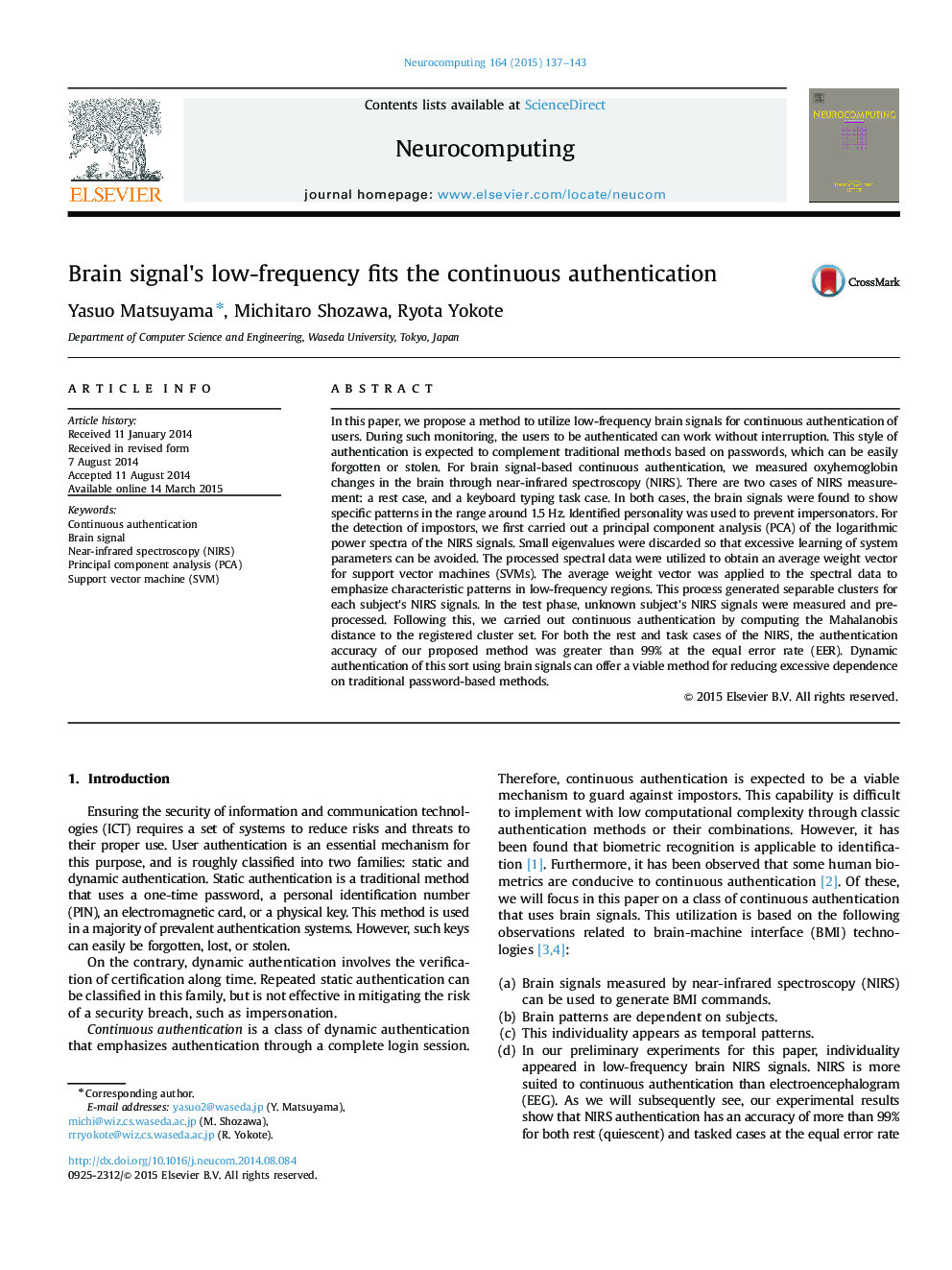| کد مقاله | کد نشریه | سال انتشار | مقاله انگلیسی | نسخه تمام متن |
|---|---|---|---|---|
| 406433 | 678084 | 2015 | 7 صفحه PDF | دانلود رایگان |

In this paper, we propose a method to utilize low-frequency brain signals for continuous authentication of users. During such monitoring, the users to be authenticated can work without interruption. This style of authentication is expected to complement traditional methods based on passwords, which can be easily forgotten or stolen. For brain signal-based continuous authentication, we measured oxyhemoglobin changes in the brain through near-infrared spectroscopy (NIRS). There are two cases of NIRS measurement: a rest case, and a keyboard typing task case. In both cases, the brain signals were found to show specific patterns in the range around 1.5 Hz. Identified personality was used to prevent impersonators. For the detection of impostors, we first carried out a principal component analysis (PCA) of the logarithmic power spectra of the NIRS signals. Small eigenvalues were discarded so that excessive learning of system parameters can be avoided. The processed spectral data were utilized to obtain an average weight vector for support vector machines (SVMs). The average weight vector was applied to the spectral data to emphasize characteristic patterns in low-frequency regions. This process generated separable clusters for each subject׳s NIRS signals. In the test phase, unknown subject׳s NIRS signals were measured and pre-processed. Following this, we carried out continuous authentication by computing the Mahalanobis distance to the registered cluster set. For both the rest and task cases of the NIRS, the authentication accuracy of our proposed method was greater than 99% at the equal error rate (EER). Dynamic authentication of this sort using brain signals can offer a viable method for reducing excessive dependence on traditional password-based methods.
Journal: Neurocomputing - Volume 164, 21 September 2015, Pages 137–143